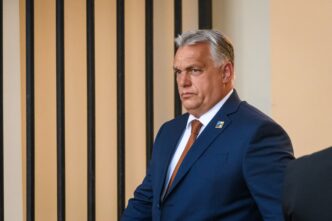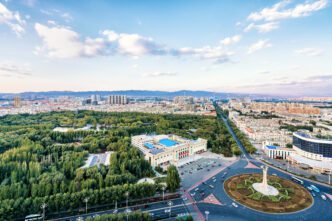Executive Summary
- President Trump is advocating for a permanent peace agreement to resolve the Russia-Ukraine conflict, stating that temporary ceasefires often fail to hold.
- Following a meeting with Russian President Putin that did not result in a ceasefire deal, President Trump is scheduled to meet with Ukrainian President Volodymyr Zelensky in Washington D.C. on Monday.
- Significant differences remain between Ukraine and Russia regarding the terms of a lasting peace, particularly concerning territorial integrity and NATO membership.
The Story So Far
- Significant disagreements persist between Ukraine and Russia regarding the terms of a lasting peace, particularly on territorial integrity and security alliances.
- Ukrainian President Volodymyr Zelensky has consistently rejected ceding territory, citing the 2014 annexation of Crimea and the 2022 invasion as reasons for his stance against emboldening future Russian invasions.
Why This Matters
- President Trump’s push for a permanent peace agreement, rather than a temporary ceasefire, signals a more ambitious but potentially more complex and protracted diplomatic effort to resolve the conflict.
- Despite renewed high-level diplomatic efforts, the fundamental disagreements between Ukraine (territorial integrity) and Russia (territorial concessions, NATO neutrality) present significant obstacles to achieving a lasting peace agreement.
Who Thinks What?
- President Donald Trump advocates for a comprehensive and permanent peace agreement to resolve the Russia-Ukraine conflict, believing that temporary ceasefires are insufficient and often fail.
- Ukrainian President Volodymyr Zelensky agrees on the need for a durable and lasting peace, but firmly rejects any notion of ceding territory, arguing it would encourage future Russian aggression.
- Russian President Vladimir Putin maintains that a lasting settlement requires eliminating the “root causes of the conflict,” which implies Ukraine’s withdrawal from occupied regions and abandoning its NATO aspirations.
President Donald Trump is advocating for a permanent peace agreement to resolve the ongoing conflict between Russia and Ukraine, stating that temporary ceasefires often fail to hold. His remarks came after a meeting with Russian leader Vladimir Putin in Alaska concluded without a ceasefire deal, prompting Trump to engage with Ukrainian President Volodymyr Zelensky, who is now expected to travel to Washington D.C. on Monday.
Diplomatic Efforts Unfold
Writing on Truth Social, President Trump described his meeting with Putin as having made “great progress” but acknowledged that a deal had not been reached. He emphasized his preference for a comprehensive peace agreement, asserting that ceasefires “often times do not hold up” and that a lasting resolution was the optimal path forward.
Following his return to Washington, Trump reported a “very successful day” in Alaska, including positive phone calls with President Zelensky, European leaders, and NATO Secretary-General Mark Rutte. Trump indicated that if discussions with Zelensky on Monday prove fruitful, a subsequent meeting with President Putin would be scheduled to advance a peace agreement.
Differing Stances on Peace Terms
Ukrainian President Volodymyr Zelensky echoed the sentiment for a durable resolution, stating that “a real peace must be achieved, one that will be lasting, not just another pause between Russian invasions.” His planned visit to Washington D.C. signals continued diplomatic efforts.
Russian President Vladimir Putin, however, maintained that a lasting settlement requires eliminating the “root causes of the conflict” in Ukraine. This phrasing suggests a continued demand for Ukraine to withdraw from the partially occupied regions of Donetsk, Luhansk, Kherson, and Zaporizhzhia, and to abandon its aspirations for NATO membership.
President Zelensky has consistently rejected the notion of ceding territory, arguing that such a move would only embolden Russia to undertake future invasions, referencing the 2022 invasion and the 2014 annexation of Crimea. Putin also urged Ukrainians and Europeans to avoid hindering the peace process.
Meeting Dynamics
During a media address in Alaska, Trump remained silent as President Putin spoke for several minutes. When given the floor, President Trump described his relationship with Putin as “fantastic” and noted that while “many points were agreed,” a few significant issues remained unresolved. Neither leader took questions, and a planned bilateral “working lunch” did not occur.
The diplomatic efforts underscore a shared desire among the leaders to end the conflict, though significant differences persist regarding the terms of a lasting peace. While President Trump seeks a permanent resolution over a temporary ceasefire, the divergent positions of Kyiv and Moscow on territorial integrity and security alliances present considerable challenges to achieving such an agreement.








